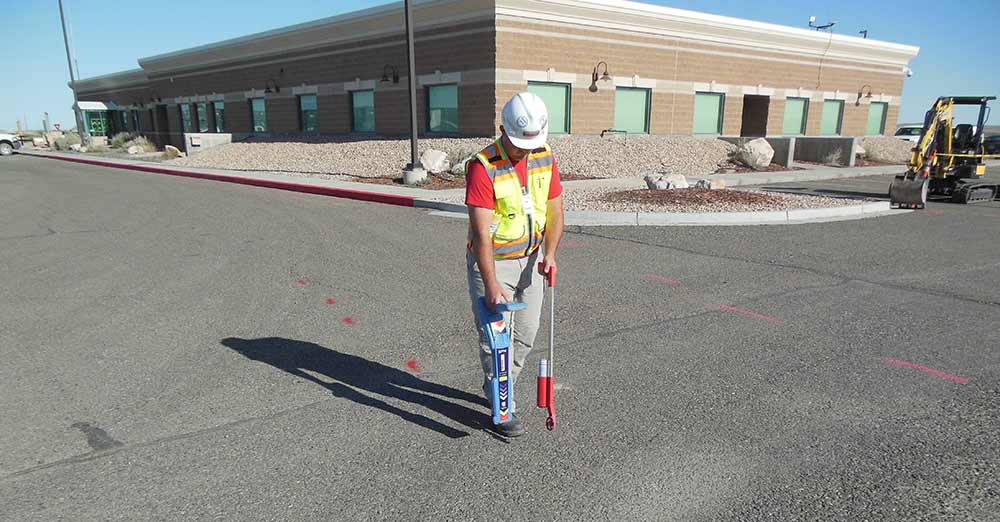
When conducting underground utility locating services, Penhall Technologies uses two types of technology: Ground penetrating radar (GPR) and electromagnetic detection (EM). Both of these are great resources for locating underground utilities.
GPR locates underground utilities by emitting radar waves into the ground. These waves pass through the substrate and reflect off of objects that vary in dielectric from that of the surrounding earth. Ground penetrating radar works best when you need to locate: buried pipes, cables, underground storage tanks, etc.
On the other hand, electromagnetic induction detects electromagnetic fields. A magnetic field occurs when a current is running through a transmitting line such as an electrical cable or communication line. The EM unit can detect both passive and active signals.
A passive signal is when a utility, such as an electrical line, is currently turned on and is generating an electromagnetic field. An active signal is when a line is not turned on, and a temporary tone is induced into it. This creates a temporary electromagnetic field. The, the EM unit can detect this field.
Recently, our analyst put to use both technologies for a utility locating job. An electrical company contacted us for a project at a medical facility in the city of Seattle, Washington. The electrical company was in charge of rerouting electrical lines through the parking lot of the medical facility.

The analyst initiated the scanning and set a dielectric based on the known soil conditions of the area. He conducted GPR first, utilizing the GSSI SIR3000/400MHz antenna combo. The analyst knew that once he completed the locate , the cut and excavation performed by Penhall Company would not go any deeper than three feet. The survey covered not only the requested area, but a much larger area as well to confirm the location of all subsurface hazards.
The analyst marked out several suspected utilities and an area of shallow root systems, despite needing to work around parked vehicles, tight quarters, and raised landscaping beds.
The analyst used electromagnetic detection equipment after the scan. He swept the area with the RD-7000 to ensure maximum accuracy. From this, the analyst located one additional electrical utility. This particular utility was either too small or too deep to see with the GPR equipment. This is why we provide our analysts with both technologies. It makes us the ideal private utility locator.
Penhall Technologies employs multiple technologies for your utility locating needs, making sure that you finish your projects safely and on time.

